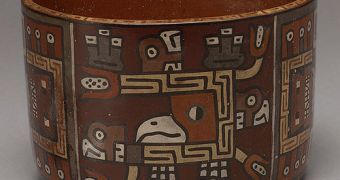Peru once again proves the fact that it is an archaeological El Dorado, one of the few places where ancient scientific treasures lie beneath the ground, waiting to be found. Its hundreds of archaeological sites reveal the legacy of old cultures that existed thousands of years ago, spanning many cultures, such as the mighty Inca, which still ruled the lands when the Spanish conquistadors descended upon them in the first decades of the 16th century.
This time, experts conducting dig works in the northern part of Peru, at the 3-mile (5-km) wide archaeological site of Cerro Patapo, 14 miles (22 km) away from the city of Chiclayo, on the coast of the Pacific ocean, came upon the remains of a whole city, which they believe to be the missing link between two ancient civilizations: the Wari and the Moche. This is actually the first solid evidence related to the existence of the Wari culture, thought to have prospered between 100 AD and 600 AD.
"It provides the missing link because it explains how the Wari people allowed for the continuation of culture after the Moche," stated Cesar Soriano, chief archaeologist on the project, for Reuters. Among the items discovered in the city were ceramics, clothing pieces, the preserved remains of a young woman, as well as what appear to be special places used for human sacrifices, as suggested by a bunch of bones found at the foot of a cliff in the vicinity.
The Wari civilization expanded from the southern regions of Peru towards the north, and was known as a people of travelers. They established their capital close to the contemporary city of Ayacucho, in the Andes, and built a complex and large road network straying far from their main city. The long distances they traveled to are also suggested by the recent discovery of a mummy that is thought to be of Wari origin, found in the ruins of Huaca Pucllana in Lima, some 500 miles (800 km) from the Chiclayo site.

 14 DAY TRIAL //
14 DAY TRIAL //